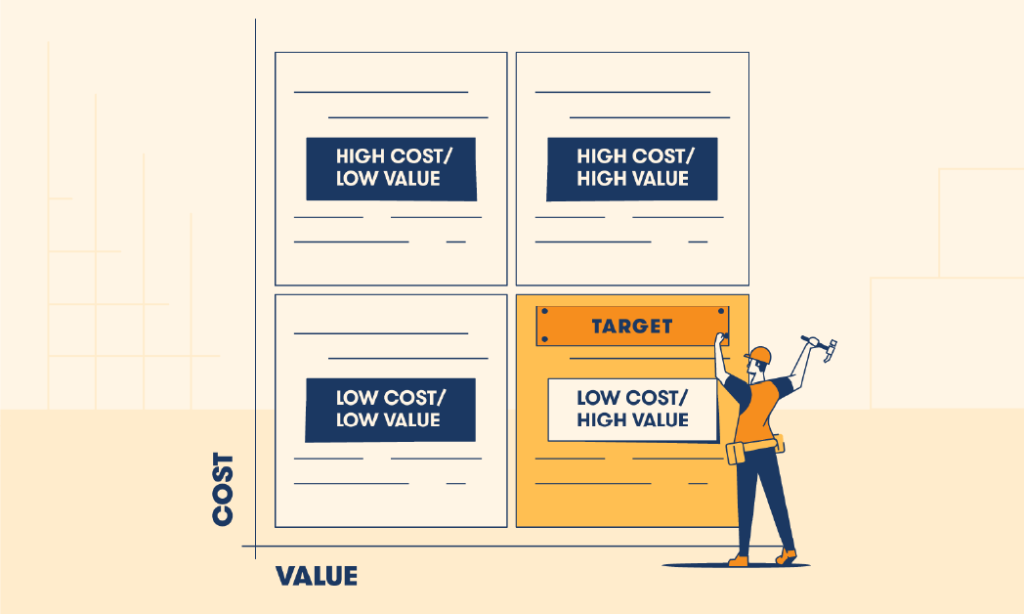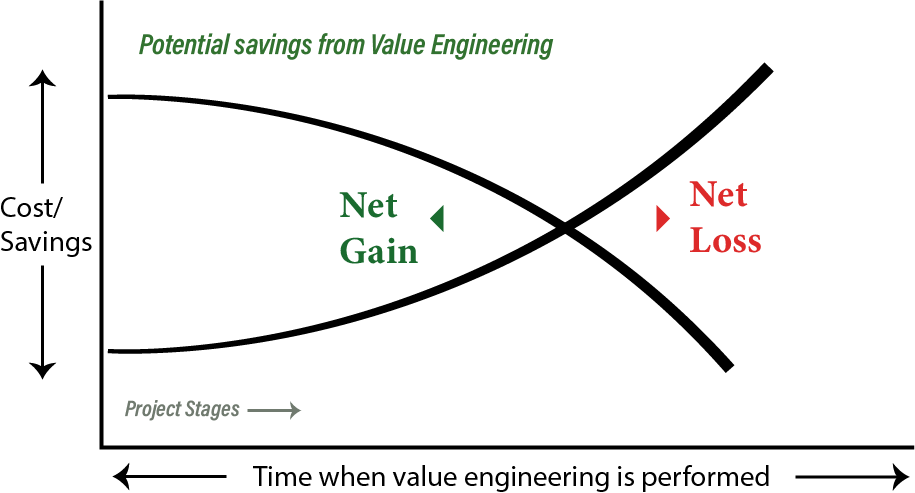GEM Engserv Pvt. Ltd is an ISO 9001:2015 certified organization, certified by TUV India in accreditation with National Accreditation Board for Certification Bodies (NABCB).
GEM Engserv Pvt. Ltd is an ISO 9001:2015 certified organization, certified by TUV India in accreditation with National Accreditation Board for Certification Bodies (NABCB).

Continuing the discussion regarding value engineering from Part 1, we now look at a few more aspects about Value Engineering. This includes a roadmap to foster innovation, internally encourage the practice and possible reasons why project proponents sometimes miss the bus in implementing this on their projects.
Ans: The answer is a definite yes! The number of innovation or the pace with which these hit the industry may be slower than what we observe in some other industries. However, innovation does take place in construction. Concrete, RCC and PSC are all innovations and within RCC and PSC, there have been a series of smaller innovations. One can easily list more than a few hundreds of innovative products and solutions that have been adapted by the construction industry.
Ans: Quantification of Value Engineering requires a baseline of functionality and cost to be in place at the time of starting Value Engineering. The baseline functionality is usually documented in the project brief or design basis reports. The cost baseline is documented in the last approved budget. It is essential that the budget contains sufficient details to pin point the cost of existing solution.
Ans: As explained earlier, benefits of Value Engineering keep reducing and its cost keeps increasing with passage of time. It is thus advisable that Value Engineering efforts are stopped at some time otherwise it may only divert management attention and may be counter-productive.

Ans: This happens when the organizations only focus on economic value. It should be recognized that value can have other than economic dimension such as aesthetic, social, religious etc. Any Value Engineering idea that conflicts with these non-economic values runs the risk of failure or resistance by other stakeholders. Reasons why aesthetic might take a back seat includes the fact that it is difficult to assign economic value to aesthetic aspect and these are more subjective that engineering aspects.
Ans: To ensure that Value Engineering does not result in compromising product quality, one should consciously focus on the requirements / characteristics of the product such as strength, durability, flexibility, water tightness, smoothness, density, speed, accuracy etc. and examine the VE suggestion on all critical product characteristics. If the Value Engineering involves use of a new product / process a new and specifically designed Inspection & Test Plan should be developed and implemented for the same.
Ans: All of us are born creative. Through rigid discipline and pressure to conform to social norms, our natural instincts are smothered, which also suppresses our creativity. To develop people with innovative mind-set, we need to encourage people who ask questions and also encourage risk taking behaviour. Failure should be treated as a stepping stone for success and something to learn from, rather than a disastrous event.
Ans: The very fact that this question has been asked indicates the resistance that prevails in the minds of some of the stakeholders. Consultants are expected to support Value Engineering initiatives and ideally there should be no efforts required to convince them. However, given that such a situation exists, one suggestion to resolve the problem is to embed the requirement of Value Engineering in the consultant’s contract and also to create conditions that reward the consultant rather than penalise him. Some progressive organizations have also created an SOP for Value Engineering and consultants working for such organizations are well aware of the same and expect to be involved in Value Engineering. Finally, the developer / owner is the paymaster and if a consultant adopts an attitude of ‘my way or highway’ the only option would be not do business with such consultants.
Ans: Value Engineering is far more challenging in fast track projects. As explained earlier, one of the causes why Value Engineering is required is lack of adequate time for carrying out proper and co-ordinated designs. It is unlikely that in such a situation Value Engineering will be contemplated. However, if it is desired to be carried out in fast track projects it should be done as a ‘special project’ with precise problem statement and timeline allowed for the Value Engineering efforts.
If you have any queries about VE, do write to us at business@gemengserv.com